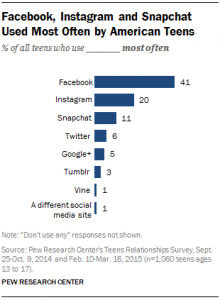With the introduction of social media, college recruitment has changed forever. Whether you’re looking to engage alumni, increase qualified applicants, or foster a better community on campus, social platforms may be the best means for universities to access the audience they are interested in. Need more proof? 98 percent of college students use social media.
In the past year, we’ve seen increases of 1,500 percent year over year in engaged users, and an increase of nearly 1,100 percent in social reach for our clients in higher education. Whether you’re looking to reinvigorate your school’s social media practices, revamp strategy, or just get inspiration for future tactics, we’re here to help. Download our checklist to keep these tips on hand.
Engage users with valuable content.
If you’re putting out content that doesn’t resonate with users, your social channels are not only falling short of their highest potential – they’re suffering. Finding the right content that resonates with users inherently, whether it’s where to eat around campus or highlighting student communities that may entice recruits, helps engage those who like your university’s social profiles. Without providing value to those who follow you, engagement will decrease and reduce the value of your social profiles.
How much can it help? In the past year, we’ve seen increases of 1,500 percent year over year in engaged users for a higher education client. Learn more about why engagement is the most important metric here.
Don’t get penned into existing models.
While you may be tempted to try similar marketing tactics online as you would for traditional advertising, it’s important to be nimble and work with the new ways people engage with you on social media and seek out creative ways to get them to convert. Whether it’s a recruitment or fundraising campaign, different methods are required to get great results.
For instance, Columbia launched a Giving Day campaign that used a custom landing page and social targeting to engage new and existing donors. They also engaged with social ambassadors to spread the word about the campaign and conducted live streams from faculty and university leaders to engage potential donors and thank people for contributions. The results? $6.8 million dollars in funding.
Share the community, not just the credentials.
While incoming college students may be increasingly focused on the reputation of a college or the available classes, sharing why your existing students love your school is the best tool for acquiring strong and qualified applicants. Video interviews, Instagram takeovers, and social media scavenger hunts are great ways to allow prospective students to see what it’s like to be a part of your college’s community – not just what it will be like to have the diploma at the end. In fact, sharing and showing the experience of your current students may even help. Facebook says that posts with a personal tone receive 120 percent above average engagement. We have seen personal posts with emotional hooks perform incredibly strongly, both with existing audiences and in sponsored content. For instance, of our top posts over the past year, 4 of the 5 posts had a personal angle.
Share your star graduates and accomplishments with humility.
Got an all-star staff? Tell your social community about it!
If you have amazing clubs, a fantastic campus location or amazing post-grad job placement rates, talk about it. These benefits of your university will all tie into an individual’s college decision. Prospective students aren’t likely, however, to dig through pages of your website to find them out. Quick graphics with fast stats highlighting the value of your college are an effective way to disseminate information, along with profiles and videos that highlight the best things about being a student and alumni of your campus. We have found that posts with informative content on them get 4-5x as much as engagement as a traditional photo. Get more tips here.
Establish a social media team.
While social media may often get pushed to the side for other priorities, it is important for colleges to have dedicated team members working continuously to improve the community and presence you have online. 94% percent of teens are using social media, specifically Facebook, Instagram, etc. 71% percent of teens say use more than one of these social networks: Facebook, Google+, Instagram, Twitter, Snapchat, Vine and Tumblr.
This is where college-minded folks are getting their information and they expect their future collegiate home to mirror their likes, needs, and values as well. Colleges cannot afford to have their social presence lapse.
Sharing helpful student information, continuously improving and testing content or landing pages, and sharing what makes your campus great are all part of a holistic social strategy that yields great results.
Ready to take your school’s social media to the next level and see results?
Remember: thinking outside the box can help you connect and create content that resonates with your students. Streamlining your social presence and creating a social atmosphere that mirrors campus life are key ingredients of a great social media strategy.
Want help? Reach out to us today to hear how we can make an impact for your higher education institution and don’t forget to download our checklist here.

